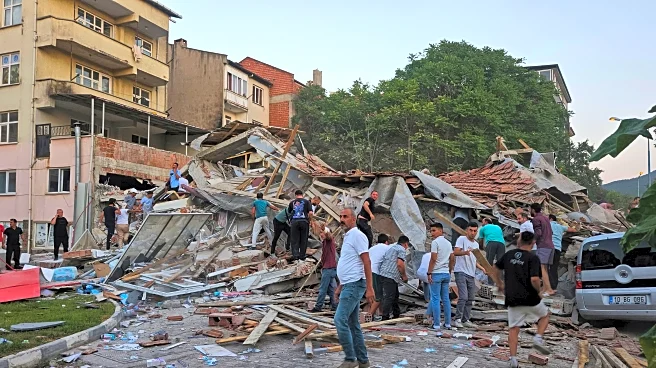Rapid Read • 7 min read
A 6.1-magnitude earthquake struck Turkey on Sunday, as reported by the United States Geological Survey (U.S.G.S.). The earthquake occurred at 7:53 p.m. Eastern European time, approximately 7 miles southwest of Bigadiç, Turkey. The U.S.G.S. is currently reviewing data, which may lead to revisions in the reported magnitude and updates to the shake-severity map. The earthquake's intensity was significant enough to be felt beyond the immediate area, with potential aftershocks expected. Aftershocks are smaller earthquakes that follow a larger one, occurring in the same general area and can continue for days, weeks, or even years after the initial event.
AD
The earthquake in Turkey highlights the region's vulnerability to seismic activity, which can have significant implications for infrastructure and public safety. The potential for aftershocks poses ongoing risks to affected areas, potentially exacerbating damage and complicating recovery efforts. This event underscores the importance of preparedness and robust response strategies in earthquake-prone regions. The U.S.G.S.'s role in monitoring and updating information is crucial for informing local authorities and the public, aiding in effective disaster management and mitigation efforts.
As seismologists continue to analyze the earthquake data, updates on the magnitude and severity are expected. Local authorities in Turkey will likely assess the damage and coordinate relief efforts, focusing on areas most affected by the earthquake and potential aftershocks. The international community may offer support, depending on the scale of the impact. Monitoring for further seismic activity will be essential to ensure public safety and facilitate recovery.
The earthquake in Turkey may prompt discussions on the need for improved building codes and infrastructure resilience in seismic zones. It also raises awareness about the importance of early warning systems and community preparedness in minimizing the impact of such natural disasters. Long-term, this event could influence policy decisions regarding disaster risk reduction and management strategies.
AD
More Stories You Might Enjoy











